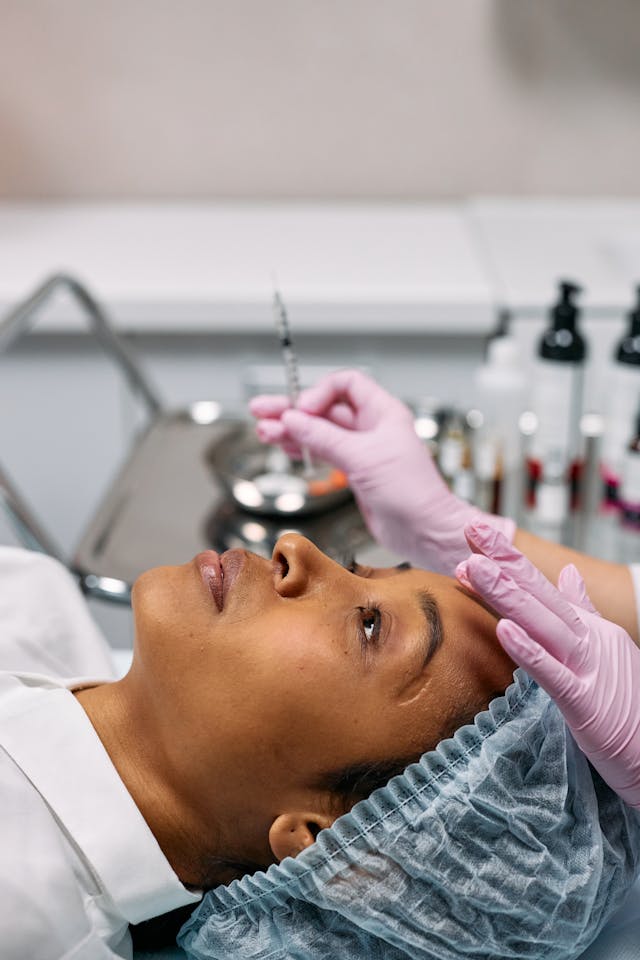
Getting a facelift is a decision that requires careful thought and preparation. Facelifts, also known as rhytidectomies, are becoming increasingly popular as more people seek to rejuvenate their appearance and boost their self-confidence. However, before committing to this surgical procedure, it is crucial to be well-informed about what it entails, the benefits it offers, and the potential risks involved.
This guide will explore what a facelift is, why people choose to undergo this surgery, the risks and side effects to be aware of, and the essential questions you should ask your surgeon. Additionally, we will discuss what steps to take if complications arise and how consulting a solicitor experienced in facelift compensation claims can help.
What is a facelift?
A facelift is a cosmetic surgery procedure designed to create a more youthful appearance by reducing sagging skin, tightening underlying tissues, and smoothing deep folds on the face. This surgery primarily focuses on the lower two-thirds of the face, targeting areas such as the cheeks, jawline and neck.
The procedure
During a facelift, a surgeon makes incisions typically around the hairline, continuing around the ears and sometimes extending into the scalp. The skin is then carefully lifted, and the underlying muscles and tissues are tightened. Excess skin is removed, and the remaining skin is repositioned for a smoother, firmer appearance.
Types of facelifts
There are several types of facelifts, each varying in complexity and targeted areas:
- Traditional facelift: involves a more extensive procedure with incisions around the ears, hairline, and sometimes the neck. It provides comprehensive rejuvenation for moderate to significant ageing signs.
- Mini facelift: less invasive with shorter incisions, typically suitable for younger patients or those with early signs of ageing.
- SMAS facelift: focuses on the superficial musculoaponeurotic system (SMAS), a layer of tissue beneath the skin. This method aims to achieve longer-lasting results by lifting and tightening deeper tissues.
Advancements in facelift techniques
Over the years, facelift techniques have significantly advanced. Modern approaches focus on creating natural-looking results with minimal scarring and reduced recovery times. Techniques such as the endoscopic facelift, which uses smaller incisions and a camera to guide the surgery, and the use of fat grafting to restore volume, have enhanced the outcomes and patient satisfaction.
Why opt for a facelift?
Choosing to undergo a facelift is a personal decision often driven by a desire to rejuvenate one’s appearance and enhance self-confidence. Here are some of the common reasons why individuals opt for this procedure:
Aesthetic improvements
- Reduction of sagging skin: as we age, our skin loses its elasticity, leading to sagging and wrinkles. A facelift tightens the skin and underlying tissues, resulting in a firmer, more youthful appearance.
- Smoothing deep folds: deep lines and creases, especially around the nose and mouth, can be significantly reduced, giving a smoother complexion.
- Enhancing facial contours: the procedure can restore definition to the jawline and neck, areas that often show the earliest signs of ageing.
Long-lasting results
- Durable outcomes: unlike non-surgical treatments that require regular maintenance, a facelift provides long-lasting results, often enduring for many years.
- Comprehensive rejuvenation: facelifts address multiple areas of concern in one procedure, offering a more thorough rejuvenation compared to other treatments.
While there are various non-surgical options available, many people find that a facelift offers the most dramatic and enduring improvements for their ageing concerns.
Risks and side effects
As with any surgical procedure, facelifts come with potential risks and side effects. It’s essential to understand these before making a decision.
Common side effects
- Swelling and bruising: these are typical following a facelift and usually subside within a few weeks.
- Pain and discomfort: mild to moderate pain is common and can be managed with prescribed medications.
- Numbness or tingling: temporary numbness around the incision areas may occur due to nerve stretching.
Potential risks
- Infection: as with any surgery, there is a risk of infection. Surgeons take precautions to minimise this, but patients must follow post-operative care instructions meticulously.
- Scarring: while modern techniques aim to minimise visible scarring, some degree of scarring is inevitable. Scars typically fade over time and are usually concealed within the hairline or natural facial contours.
- Haematoma: a collection of blood under the skin can occur, requiring additional treatment to resolve.
- Nerve damage: although rare, there is a risk of temporary or permanent nerve damage, leading to weakness or numbness in the facial muscles.
- Poor healing: factors such as smoking, certain medical conditions, and not adhering to post-operative care guidelines can affect the healing process.
Long-term considerations
- Asymmetry: some patients may experience slight asymmetry after the surgery, which might require further adjustment.
- Recurrence of sagging: while a facelift offers long-lasting results, it does not stop the ageing process. Some sagging may reoccur over time, and maintenance treatments might be desired.
Questions for your surgeon
When considering a facelift, first book a thorough consultation with your surgeon. Here are some questions to ask to ensure you make an informed decision:
Qualifications and experience
- What are your qualifications and experience in performing facelifts?
- How many facelift procedures have you performed?
- Are you board-certified in plastic surgery?
Expected results
- Can you show me before-and-after photos of previous patients?
- What realistic outcomes can I expect from this procedure?
- How long will the results last?
Details about the procedure
- what type of facelift do you recommend for me and why?
- How long will the surgery take?
- Where will the surgery be performed? Is the facility accredited?
- What type of anaesthesia will be used?
Recovery process
- What should I expect during the recovery period?
- How long will it take to fully recover?
- What kind of pain or discomfort should I anticipate?
- Are there any specific post-operative care instructions I should follow?
Costs involved
- What are the total costs of the procedure?
- What is included in the cost (e.g., surgeon’s fees, anaesthesia, facility fees)?
- Are there any potential additional costs?
Handling complications
- What are the potential risks and complications associated with a facelift?
- How do you handle complications if they arise?
- What should I do if I experience any issues post-surgery?
Aftercare and follow-up
- What follow-up care do you provide?
- How often will I need to come in for check-ups after the surgery?
- Are there any long-term aftercare requirements?
Dealing with complications
While facelifts are generally safe, complications can occasionally occur. It is important to know how to handle them and when to seek professional advice.
Steps to Take
- Contact your surgeon: if you experience any complications, the first step is to contact your surgeon. They can provide guidance on immediate actions and may need to see you for an examination.
- Follow post-operative care instructions: adhering to the care instructions provided by your surgeon can significantly reduce the risk of complications. This includes keeping the incision sites clean, taking prescribed medications, and attending follow-up appointments.
- Seek legal advice: if you believe the complications are due to negligence or substandard care, it may be necessary to seek legal advice. Consulting a solicitor experienced in facelift compensation claims can help you understand your rights and options.
How can a cosmetic surgery solicitor help?
Cosmetic surgery complications can be distressing, but a specialised solicitor can provide essential support. Here’s how they can help:
- Expert legal advice: they understand cosmetic surgery law and can guide you through the claims process.
- Support and representation: they will assist you in gathering evidence, liaising with medical experts, and building a strong case.
- Fair compensation: they aim to secure compensation for corrective surgery, medical expenses, lost wages, and other damages.
If you’ve experienced complications from a facelift, consulting a solicitor can help you navigate your options and seek the compensation you deserve.
I-COM REFERENCE: https://icomjira.atlassian.net/browse/TS-1888
Help keep news FREE for our readers
Supporting your local community newspaper/online news outlet is crucial now more than ever. If you believe in independent journalism, then consider making a valuable contribution by making a one-time or monthly donation. We operate in rural areas where providing unbiased news can be challenging. Read More About Supporting The West Wales Chronicle






















